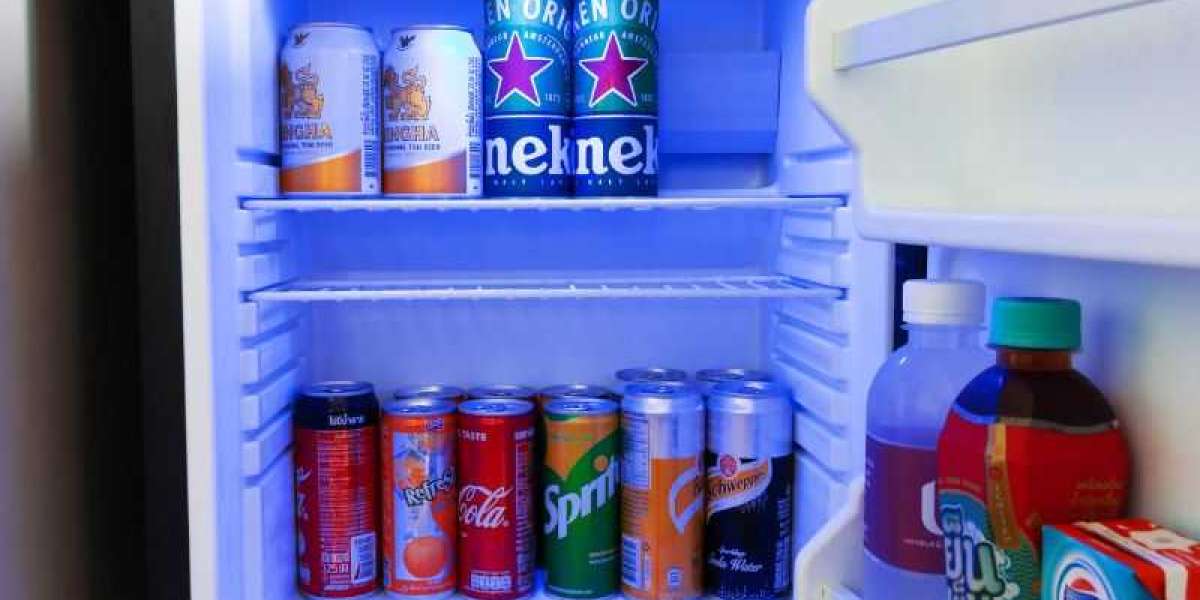In the bustling world of food service and hospitality, having the right equipment is crucial for success. Among the most vital pieces of equipment in any commercial kitchen are Commercial Fridges. These appliances not only store perishable goods but also ensure they remain fresh, safe, and readily accessible for culinary endeavors. In this guide, we'll explore everything from the types of commercial fridges available to essential maintenance tips to keep them running smoothly.
Types of Commercial Fridges
Commercial fridges come in various types, each catering to specific needs and space constraints within a commercial kitchen.
Reach-In Fridges
Reach-in fridges are perhaps the most common type found in commercial kitchens. These units feature upright designs with solid or glass doors and are ideal for storing both perishable and non-perishable items.
Advantages of Reach-In Fridges
Reach-in fridges offer easy access to stored items, making them efficient for busy kitchen environments. They also come in a range of sizes to suit different kitchen layouts.
Disadvantages of Reach-In Fridges
While versatile, reach-in fridges may consume more floor space compared to other types of commercial fridges.
Undercounter Fridges
Undercounter fridges are compact units designed to fit beneath countertops, making them ideal for small kitchens or areas where space is limited.
Advantages of Undercounter Fridges
These fridges maximize space efficiency while still providing ample storage for perishable goods. They're also conveniently located for quick access during food preparation.
Disadvantages of Undercounter Fridges
Due to their compact size, undercounter fridges may have limited storage capacity compared to larger units.
Walk-In Fridges
Walk-in fridges are large, walk-in units that offer extensive storage space, making them suitable for high-volume kitchens or establishments with vast inventory needs.
Advantages of Walk-In Fridges
These fridges provide ample storage capacity and can accommodate bulky items or large quantities of perishable goods.
Disadvantages of Walk-In Fridges
Installation and maintenance costs for walk-in fridges can be higher compared to other types of commercial fridges. Additionally, they require sufficient space within the kitchen layout.
Choosing the Right Commercial Fridge
Selecting the right commercial fridge for your establishment involves considering various factors such as space availability, storage needs, energy efficiency, and budget constraints.
Factors to Consider
Size and Capacity: Assess your kitchen space and storage requirements to determine the appropriate size and capacity of the commercial fridge.
Energy Efficiency: Look for Energy Star-rated models to ensure optimal energy efficiency and cost savings over time.
Temperature Control: Opt for fridges with precise temperature controls to maintain the freshness and safety of stored food items.
Durability and Build Quality: Invest in high-quality, durable fridges designed for commercial use to minimize maintenance and repair costs.
Maintenance Tips for Commercial Fridges
Proper maintenance is essential to ensure the longevity and efficiency of commercial fridges.
Regular Cleaning and Sanitization
Maintain cleanliness by regularly cleaning and sanitizing both the interior and exterior of the fridge, including shelves, door seals, and condenser coils.
Temperature Monitoring
Regularly monitor and record fridge temperatures to ensure they remain within safe ranges for food storage.
Inspecting Door Seals
Check door seals regularly for signs of wear or damage, as faulty seals can compromise the fridge's efficiency and lead to temperature fluctuations.
Coil Cleaning
Clean condenser coils periodically to remove dust and debris, which can impede airflow and reduce cooling efficiency.
FAQs
How often should I clean my commercial fridge? Regular cleaning should be performed daily, with a more thorough cleaning and sanitization conducted weekly.
Can I use a residential fridge for commercial purposes? It's not recommended. Residential fridges are not designed to withstand the heavy usage demands of commercial environments and may not meet health and safety standards.
What is the ideal temperature for storing perishable goods in a commercial fridge? The recommended temperature range for commercial fridges is between 34°F and 40°F (1°C and 4°C) to ensure food safety and freshness.
How can I troubleshoot common issues with my commercial fridge? Common issues such as temperature fluctuations or unusual noises may indicate underlying problems. Refer to the manufacturer's manual for troubleshooting tips or consult a professional technician for assistance.
Are there any energy-saving tips for commercial fridges? Yes, some energy-saving measures include ensuring proper door seals, avoiding overstocking, and regularly defrosting manual-defrost models.
What is the lifespan of a commercial fridge? The lifespan of a commercial fridge can vary depending on factors such as usage, maintenance, and quality of construction. On average, commercial fridges can last between 10 to 15 years with proper care.
Conclusion
Investing in the right commercial fridge is essential for the success and efficiency of any food service establishment. By understanding the different types of commercial fridges available, factors to consider during selection, and essential maintenance tips, you can ensure optimal performance and longevity of your fridge while maintaining food safety standards.



